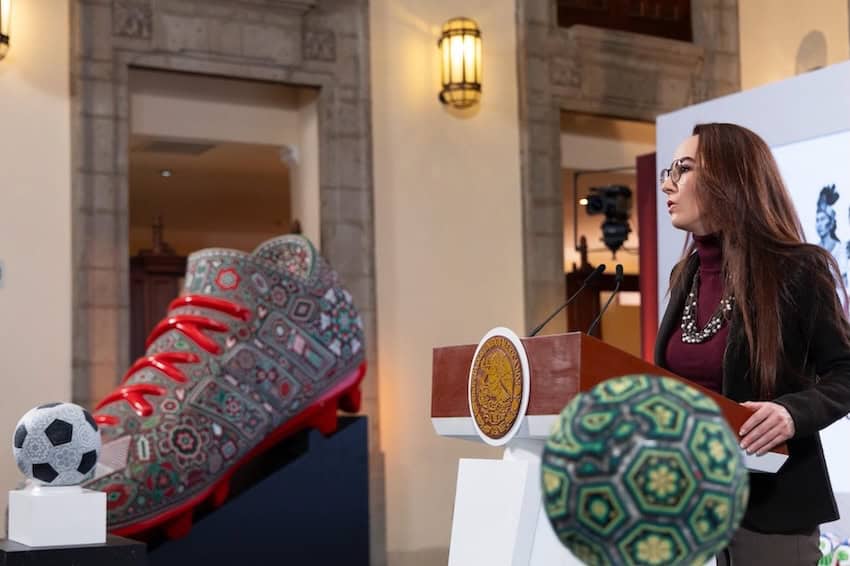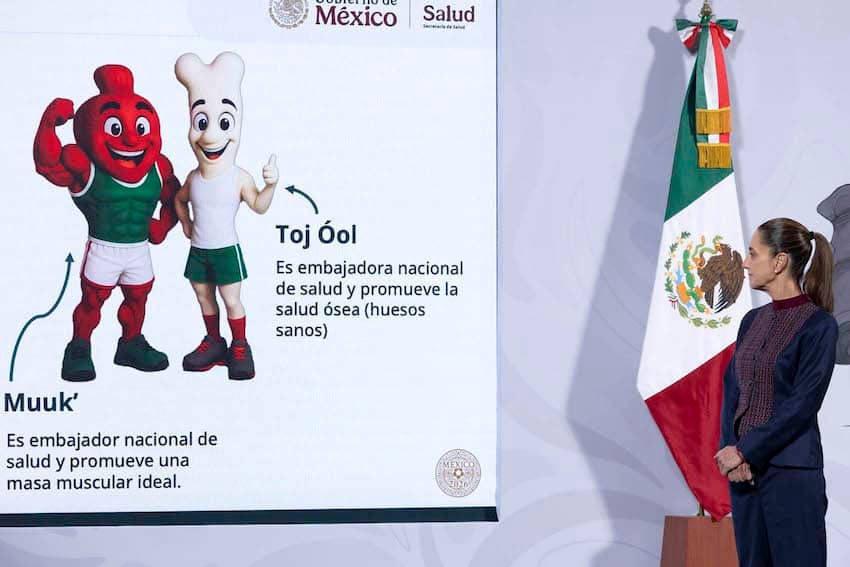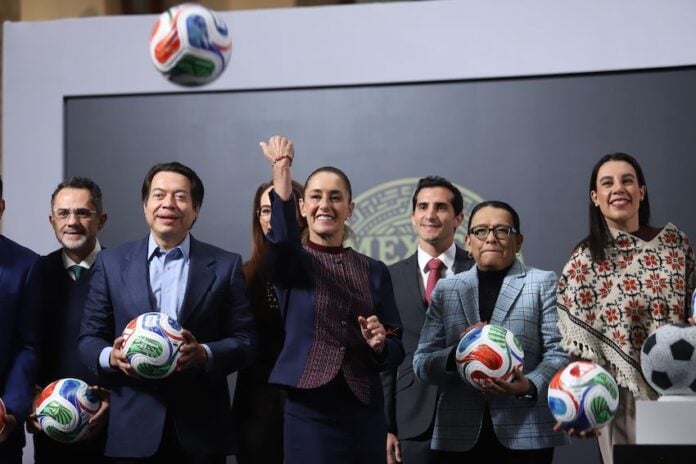With just over 200 days remaining until the start of the 2026 FIFA World Cup, President Claudia Sheinbaum presented her “Social World Cup” program, which will emphasize educational, tourism and cultural activities in the days leading up to the global soccer tournament.
Mexico’s representative for the World Cup, Gabriela Cuevas, said the goal is to take soccer beyond the stadium and directly to the people by promoting physical activity programs in schools and sponsoring tournaments and exhibition matches. The initiative also involves arranging free broadcasts of World Cup games in public squares across the country.

The mantra of Mexico’s Social World Cup is to promote “an inclusive celebration so that football reaches all neighborhoods, communities and towns in Mexico,” Cuevas said, adding that all levels of government and the private sector are committed to achieving that goal.
Featured on the months-long agenda that offers more than 5,000 activities via a “Conoce México” (“Discover Mexico”) mobile app are 177 street fairs, a mini-robotics world championship, the creation of more than 10,000 murals and attempts at three Guinness World Records.
The Guinness World Records being targeted are the largest human image of a soccer jersey (in February 2026), the largest soccer lesson (in March) and the largest soccer-themed mural in May.
Tourism, art and culture will also receive special emphasis, with a focus on Mexico’s gastronomic legacy and its world-class archaeological sites.
Tourism Minister Josefina Rodríguez said that, in anticipation of an influx of 5.5 million visitors during the tournament, 250 tourist routes taking in all 177 of the country’s Pueblos Mágicos (Magical Towns) will be reconditioned.
Soccer, culture and gastronomy will be fused into a first-of-its-kind event entitled “México de mis Sabores” (“Mexico of My Flavors”), which will be held at Mexico City’s Campo Marte from June 5 through July 22. All 31 states and Mexico City will participate, offering the best of regional cuisine while also displaying traditional crafts and folk art.
As for Mexico’s historical and cultural jewels, 12 of the country’s emblematic museums — including the National Museum of Anthropology, the National Museum of History (Chapultepec Castle) and the Templo Mayor — are getting facelifts.

Additionally, 46 archaeological sites — recognized for their impressive architecture, historical significance and cultural heritage — are being rehabilitated. Many of these treasure troves of ancient relics are designated as UNESCO World Heritage Sites.
The Health Ministry is sponsoring two mascot ambassadors to promote public health and physical activity. Muuk’ will advocate for ideal muscle mass and Toj Óol will endorse bone health.
The mascots will lead exercises prior to the 13 games being held in Mexico in local stadiums and schoolyards across the country.
Other activities are focused on promoting children’s rights, family sports, health, positive parenting, emotional support and creativity.
With reports from Infobae, Excelsior, El Informador, El Economista and IMER Noticias
